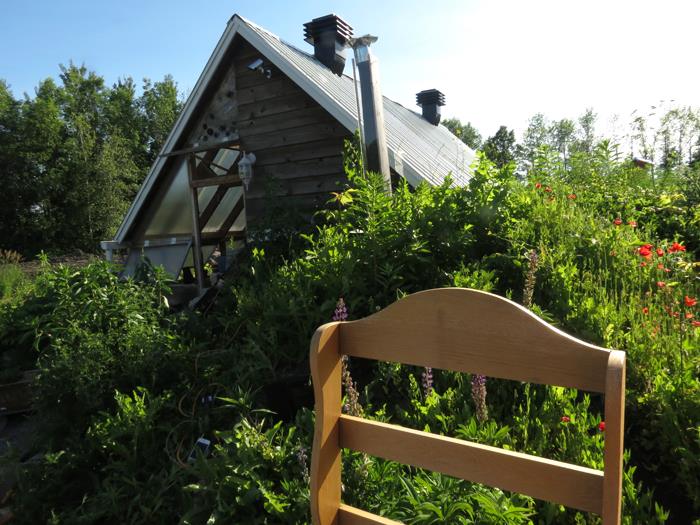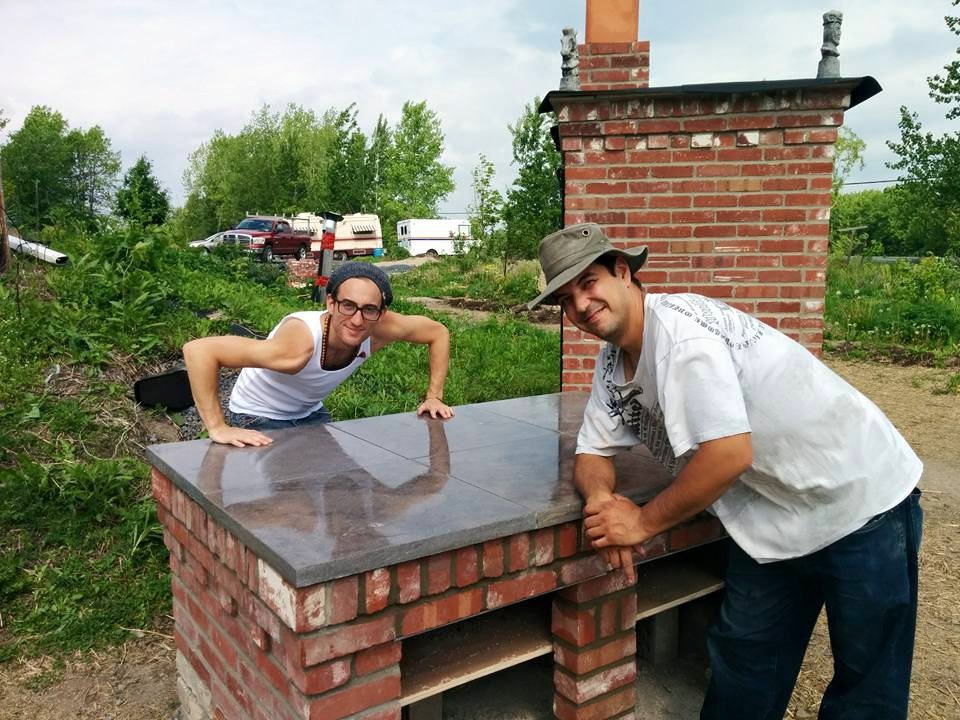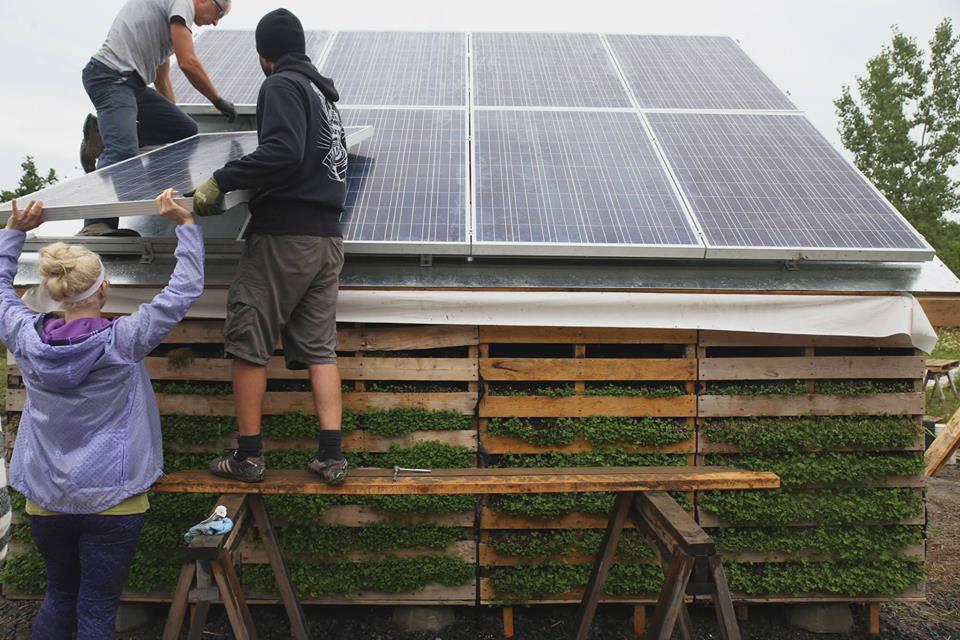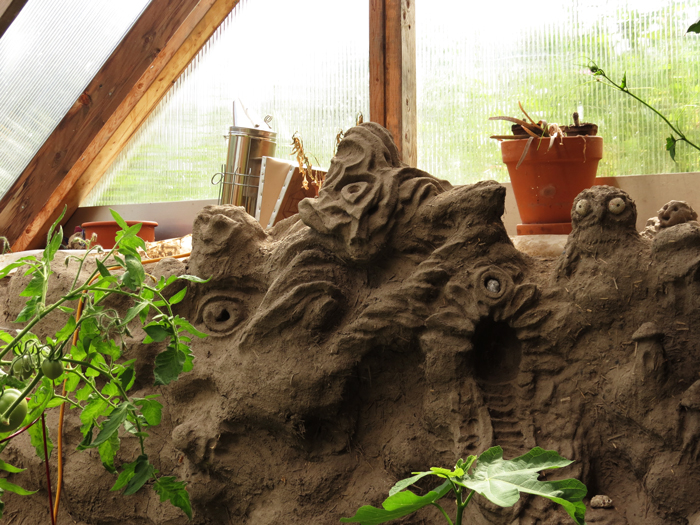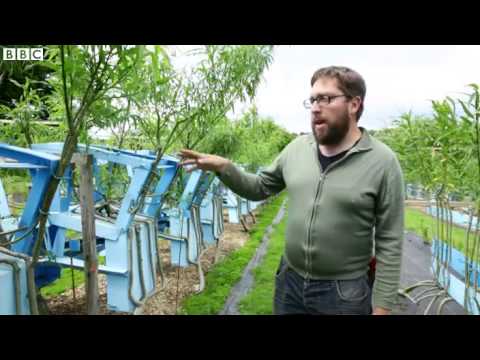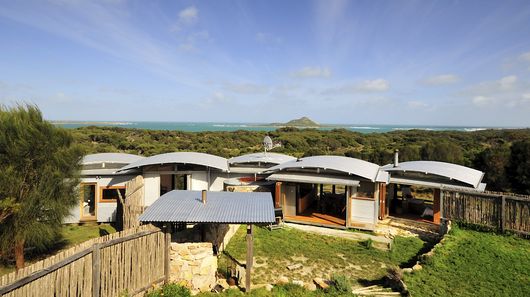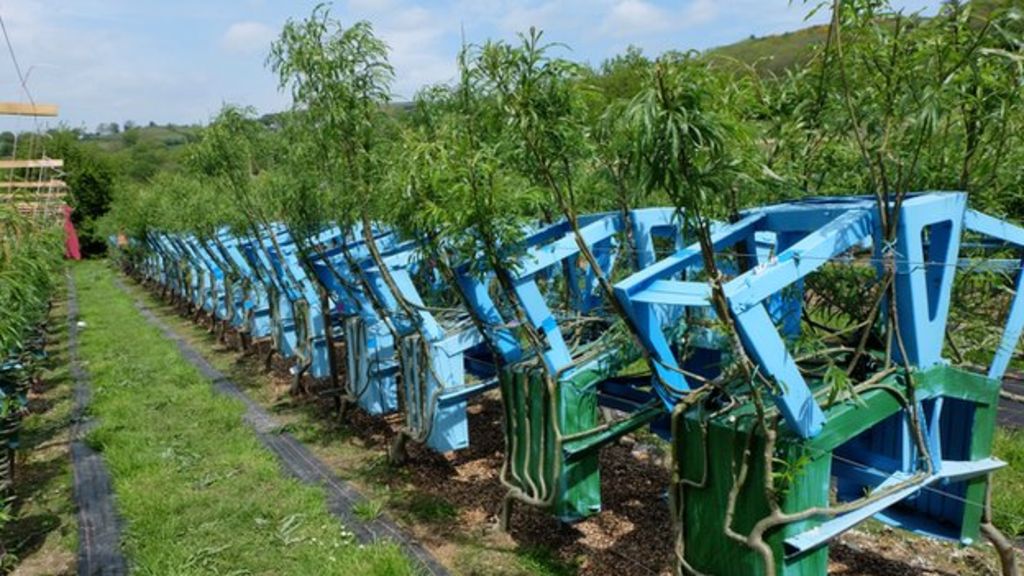Aspiring Chinese architect built his office out of 8,500 recycled beer bottles
“Beer is proof that God loves us and wants us to be happy.” This quote erroneously credited to Benjamin Franklin is nonetheless apt and resonant with drinkers around the world. The world’s most popular alcoholic drink and third most popular drink (after tea and water), beer is a gift that keeps on giving. And when it’s all finished, the empty bottles can be used for an assortment of projects. Aspiring architect Li Rongjun has taken beer to a new level by building the second floor of his office with 8,500 recycled bottles.
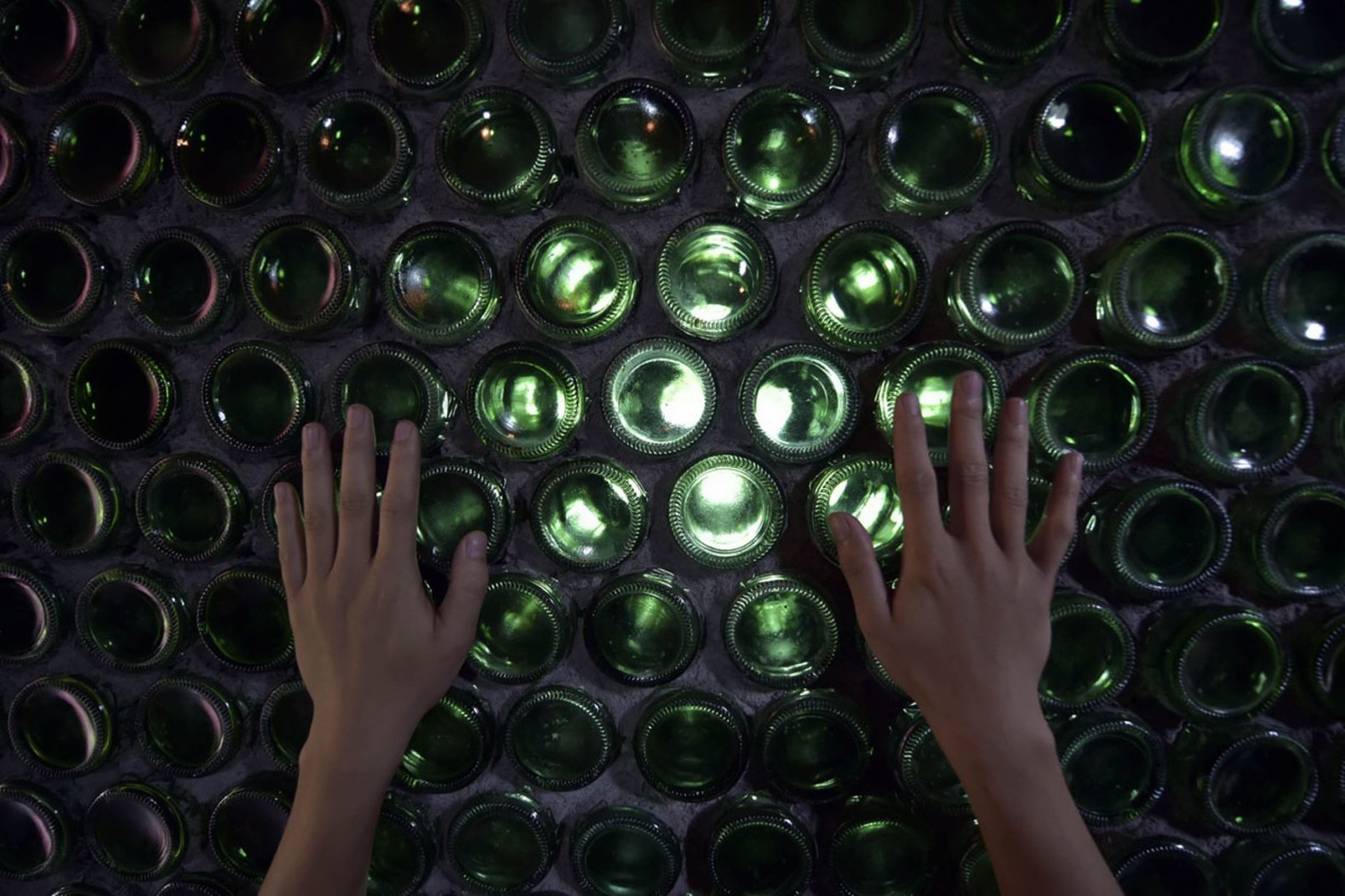
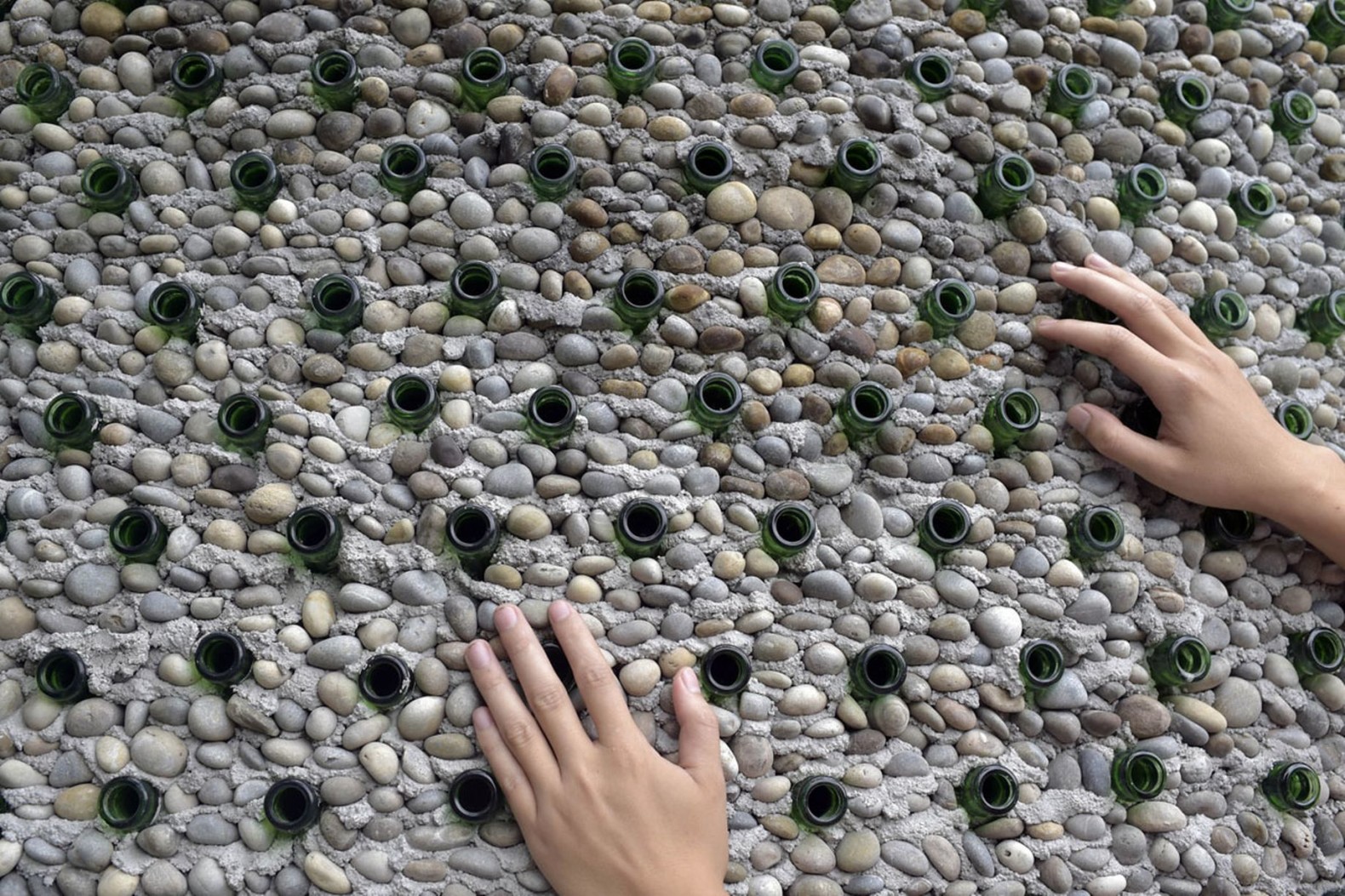
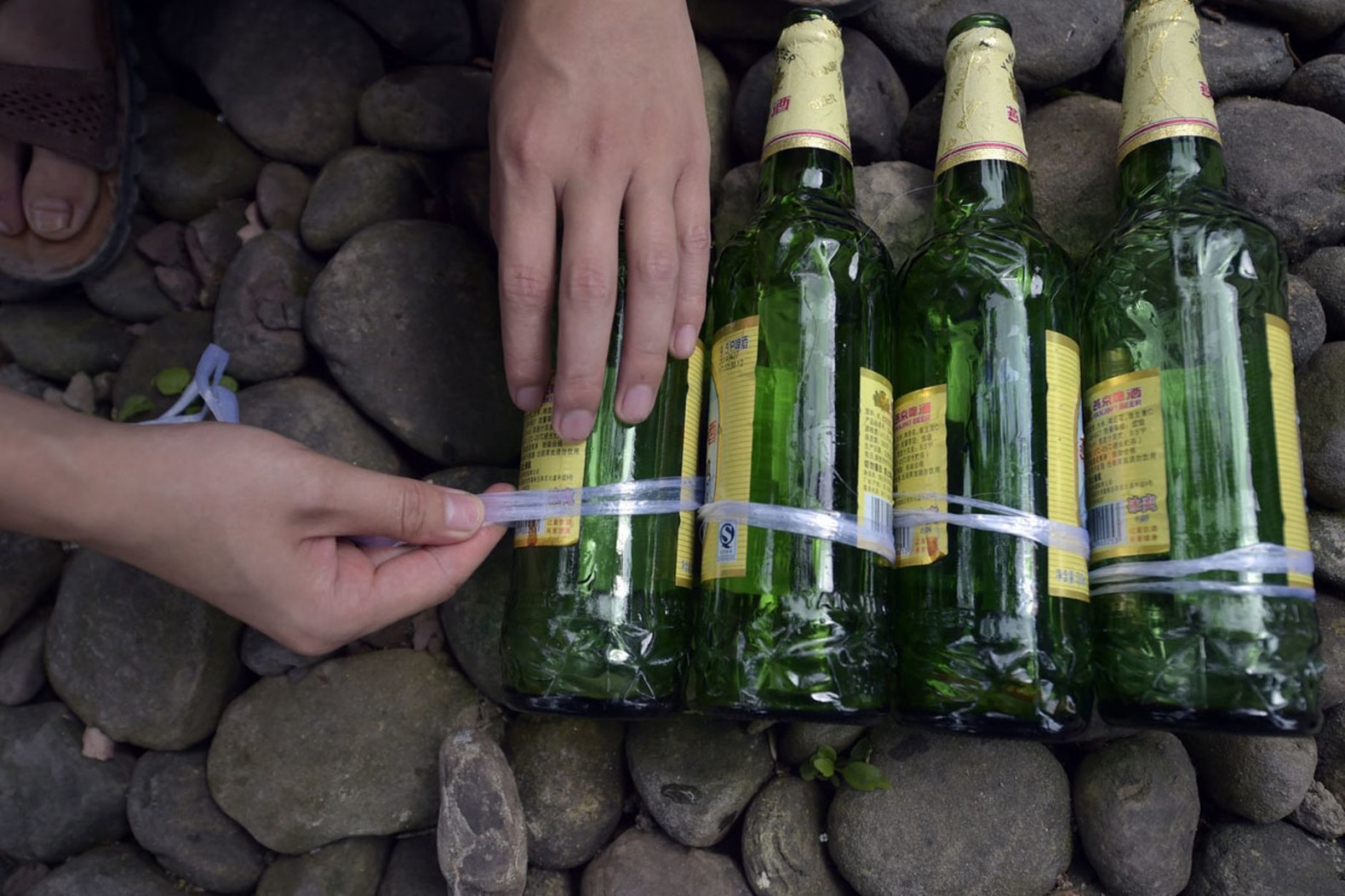
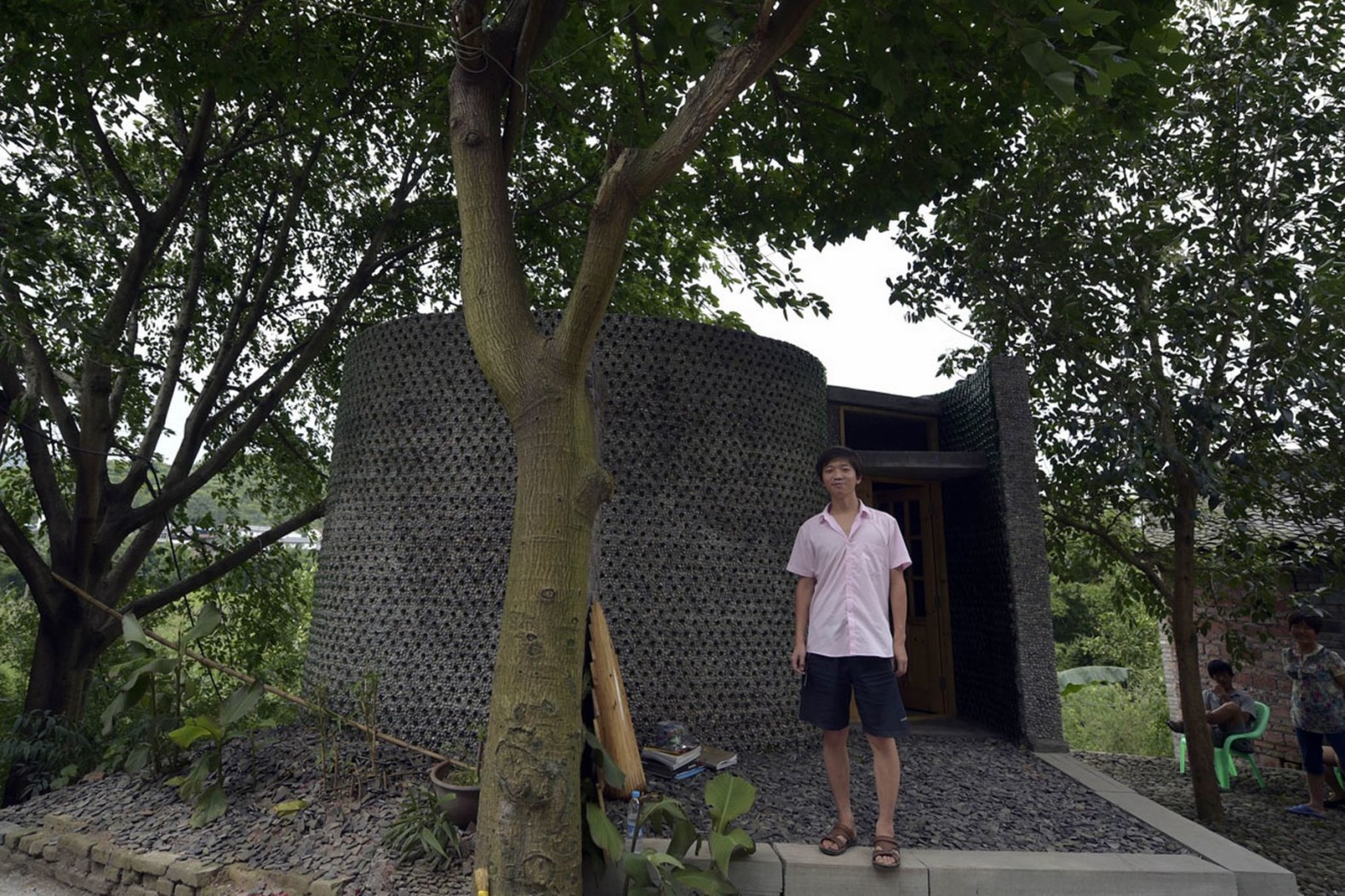

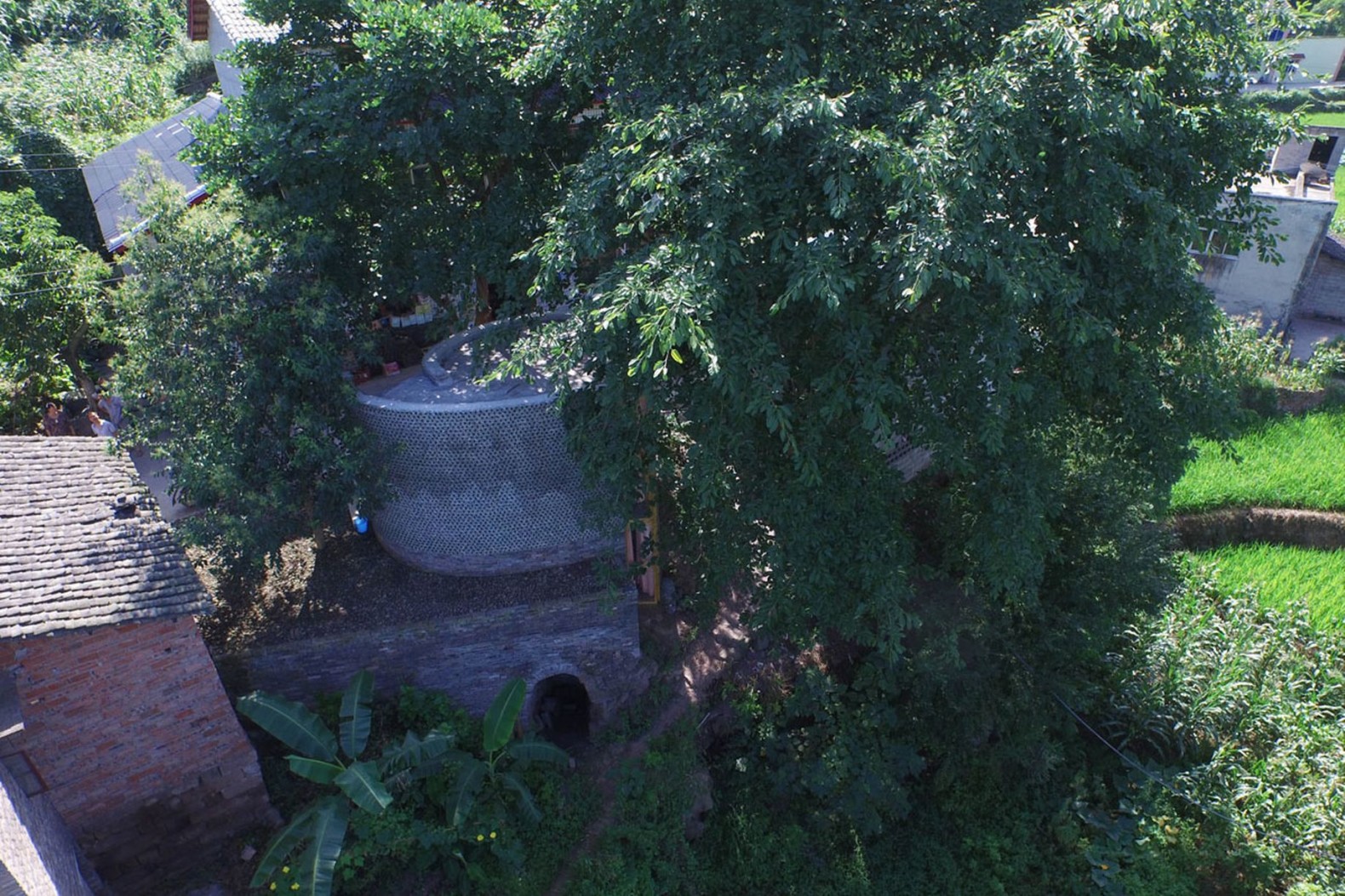

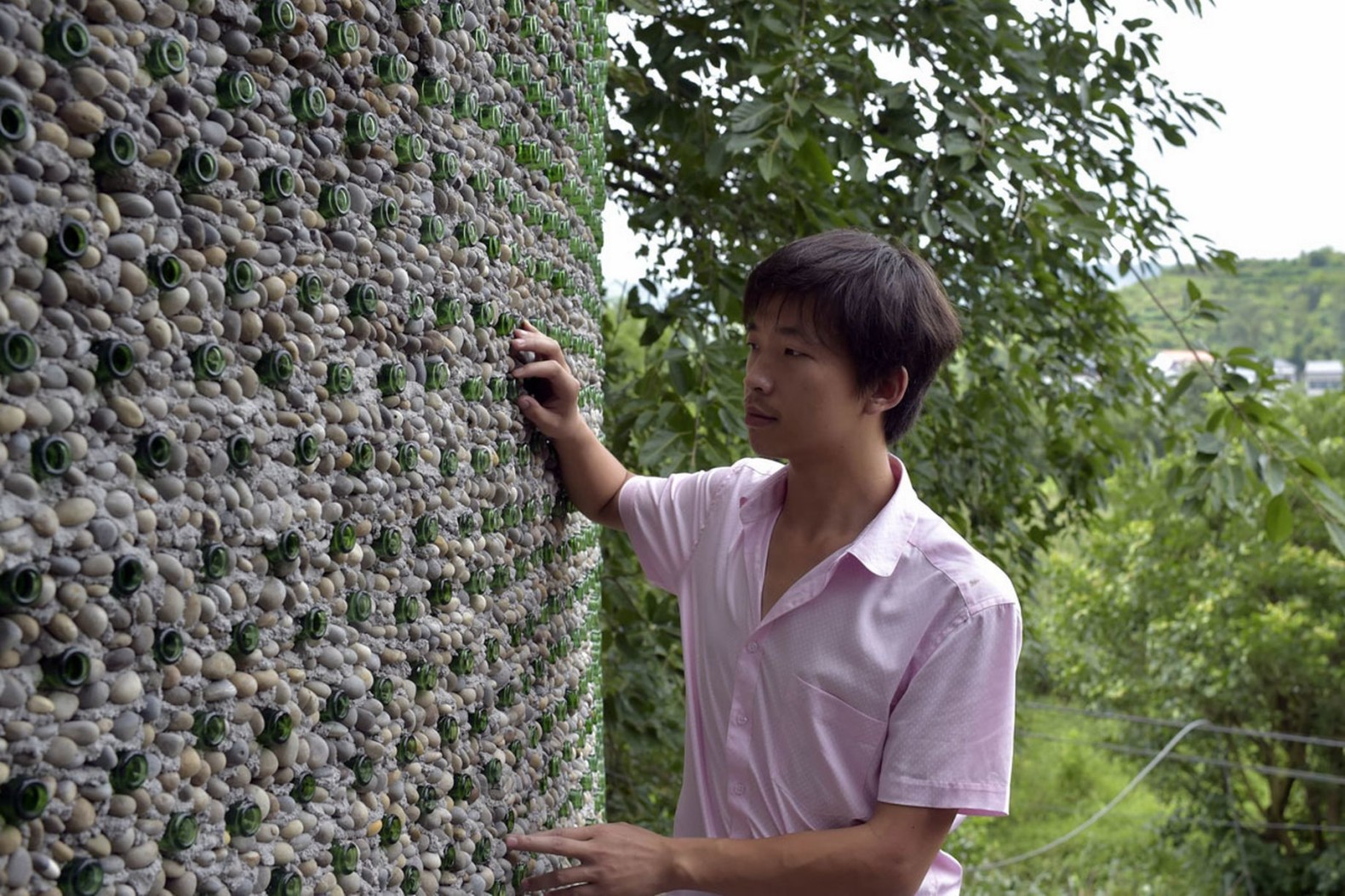
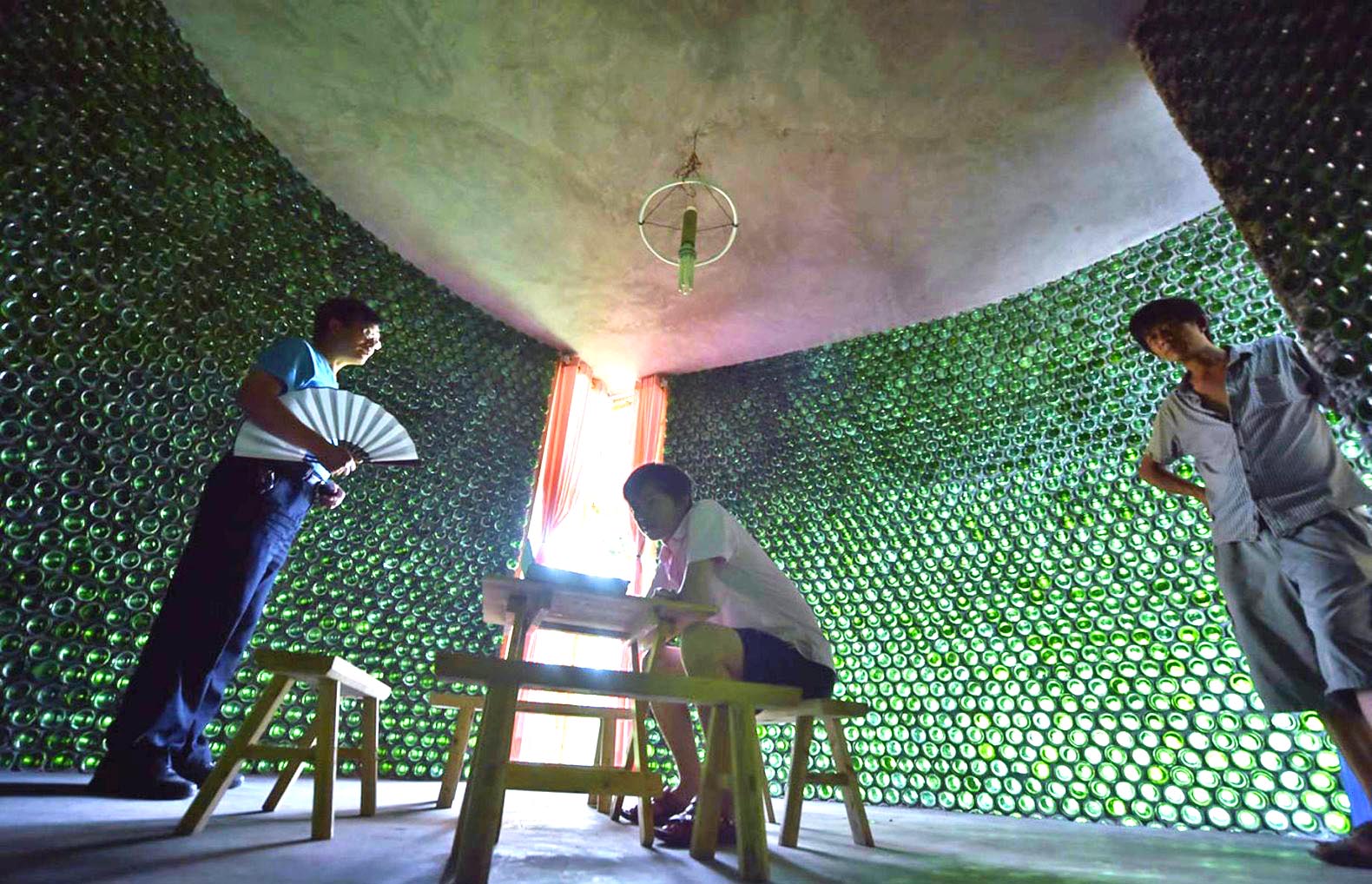
Li had previously worked for local construction companies but his dream of beer building was stifled in these settings. “There is no creativity and it’s a waste of life to be there,” Li says. “No matter if I succeed or not, I want to give my dream a try.” Li’s 300-square foot office serves as a practical and promotional purpose. “I wanted to build an artistic and usable office,” says Li. “This building is also my calling card for my future business plans. It will allow investors to see my products in real life and see my talent.”
Related: DIY: How to Recycle Aluminum Soda and Beer Cans into Roof Shingles and Siding
“He has been very independent from a young age. We could see that he has a strong determination to create his own business,” says Li’s father. “When he proposed to build the glass house, although we are a family of limited means I immediately told him he would have my complete support.” Li also seems to have support from his neighbors. “At night it looks even better,” says neighbor Li Yan. “The lights are on and the building glows. Some of the green light shines over to the nearby road.” One wonders if Li drank all of the beer by himself or if his family and friends also lent their support for this mission.
Via Oddity Central
Images via ChinaFotoPress/Getty
These “Free Spirit Spheres” Would Make the Most Amazing Getaways for Nature Lovers
Posted Jul 04, by Brandon Siewert
When it comes to camping, there are outdoorsmen, and there are people that love the outdoors. The latter have a passion for nature, but appreciate everyday comforts and prefer not to endure its elements. The former on the other hand, welcome poor conditions with open arms, seeing them as just another part of the experience.
Then there’s the third group of people – those that aren’t passionate about the outdoors per se, but desperately need a retreat from the hubbub of their lives. For those people, and many others simply looking for a quiet getaway, there’s Free Spirit Spheres.
h/t Free Spirit Spheres
The Home Aquatic
If you’ve ever pondered the idea of living on a houseboat but found the idea a little too “boaty” for your tastes, perhaps there’s a more fashionable alternative. Italian architect Giancarlo Zema, who has a reputation for dreaming up insanely extravagant mega-yachts and exotic underwater resorts, has teamed up with London-based EcoFloLife, a firm that specializes in “eco-friendly floating structures,” to create a 1,000 square foot energy-efficient floating home made from recycled wood and featuring a recycled aluminum hull. The overall design aesthetic: more house and less boat.

Waternest 100, as it’s called, stresses sustainability. As the company declares, “The world around us is becoming increasingly chaotic and conformist, requiring fully eco-friendly and recyclable housing units which allow us to live in complete independence and in harmony with nature while respecting and admiring it. The ongoing climate changes and the resulting sea- and river-level rises force us to ponder on the eco-sustainability of our housing choices.” In other words, one way to protect the Earth may be to step off it and reside instead on the 70 percent that isn’t dry land.
Waternest 100 is only about 36 feet across and 16 feet high, and its roof is covered in 60 square meters of solar panels that the company claims can generate 4 kilowatt peak (kWP), a sunny noon-time performance that outstrips most typical home solar installations. Skylights, balconies, and windows help to bring the outdoors in, under the assumption that wherever you choose to float your boat, you’ll have a very nice view. The interior can include a living room, dining area, bedroom, kitchen and bathroom-or other configurations based on need (such as office, bar, restaurant, shop and exhibition space).

As for logistics, the company says that, “WaterNest 100 does not require a boating license or complicated construction permits. Once you’ve chosen the perfect berthing place, it’s only necessary to request a simple authorization from the local maritime authorities for inland waters.” (At least in the UK.) It can be trucked to vicinity of its final location and then towed to its final destination. EcoFloLife does recommend a location with “calm waters” such as a river, lake, bay or atoll.
Skeptics note that any boat’s hull ultimately needs to be maintained, and it’s unclear if Waternest units would ever need to be pulled from the water for maintenance, and if so, how that would be accomplished. It may also not be quite so simple to just float your home wherever you feel like it. One can imagine some very interesting meetings with the local zoning board.
And with a starting asking price somewhere around $540,000, this kind of sustainability won’t come cheap, although low operating costs-and presumably the absence of property taxes-might make it affordable over the long haul.
Don Willmott is a New York-based journalist who writes about technology, travel, and the environment for a wide variety of publications and websites.
Ecoshelta prefab homes strive for sustainability from the ground up
Australian Architect Stephen Sainsbury has spent decades researching materials to reduce environmental impact. This has culminated in the development of the Ecoshelta prefabricated modular building system.
Based on an extensive evaluation of the environmental impact of building materials and other factors, the Ecoshelta Pods are constructed using a combination of eco-friendly timber, a composite panel roof, the latest wall and floor technologies and marine grade structural aluminum alloy.
Some may consider the choice of aluminum slightly controversial as it’s not the first material that springs to mind when considering a green alternative. However, Sainsbury’s 20 year study found aluminum to be a highly durable, long-term product that can be recycled repeatedly with minimal impact. It is also five times as strong as steel and half the weight, with only a quarter of the material needed.
The buildings were originally designed for installation in remote areas, with the ability to withstand extreme temperatures and conditions. The use of aluminum means that fire and cyclone rated buildings can be made directly from the material, without having to add any other resources to it.
But it’s not just the raw materials that have undergone intense scrutiny. Every step in the design process has been through a calculated evaluation of the potential environmental impact. This includes a thorough examination of the mining and manufacturing processes, transport and logistics, with consideration given to where the product is made, how far it has to travel and whether it will pollute the internal or external environment.
The Ecoshelta Pods can also be transported and delivered to any location, near and far. A recent commission saw Sainsbury and his team on a million acre station in the Kimberley, installing an accommodation building in 130 degree heat, hundreds of miles from the main gate. Another Pod was packed and shipped to Hong Kong for installation as a garden pavilion.
The Pods are usually assembled by a team from Ecoshelta or overseen by an Ecoshelta supervisor but for those with a keen sense of determination, the assembly can be managed as a DIY project. Each structure takes between one and five days to construct and needs at least four people to assemble.
A feature that makes the prospect of DIY more attractive is the innovative one-screw connection system. The average structure contains around 3000 screws, all alike, used to assemble the entire building. Think of it as a sophisticated Ikea package, with a power-driven screw in place of the Allen key. Although as with Ikea assembly, skills in the trades would be advantageous.
As part of the overall design, careful consideration has been given to light and airflow, natural ventilation, passive and active solar design which can be used for heating, cooling, fans, lights and powering a building.
The outcome is an aesthetically pleasing and versatile building that can be customized to your own taste. It’s almost like buying a car, selecting from half a dozen basic designs and then tailoring it to meet your needs. Everything can be custom selected from the various roof forms, different cuttings, linings, windows, doors, even down to the bathroom and kitchen details.
A basic model can cost around US$25,000 (AU$35,000), but most buyers spend anywhere from $38,500 to $54,000 per Pod. For those wanting a larger home, a 1600 square foot house would be in the region of $270,000.
For Sainsbury, the research continues. He is committed to the business of sustainability and exploring cutting edge technologies to minimize environmental impact. For the environmentally aware, an Ecoshelta Pod would be the ideal way to go green in style.
Source: Ecoshelta
Born in Melbourne, Australia, and raised on a diet of world travel and cultural delights, Jana has always suffered from the affliction of More is More. Not content with her ten years working as a therapist, she also fronts a Blues band, completed a Masters and writes features for a living. She has a keen interest in travel, health and wellbeing and, most regrettably, her PVR. All articles by Jana Firestone
Post a Comment Related Articles
The man who grows fields full of tables and chairs
At first glance it is a typical countryside scene. Deep in the Derbyshire Dales, young willow trees stretch upwards towards the late spring sun. Birds, bees and the odd wasp provide a gentle soundtrack to the bucolic harmony.
But laid out in neat rows in the middle of a field are what appears to be a rather peculiar crop.
On closer inspection these are actually upside-down chairs, fully rooted in the sandy soil.
Slender willows sprout out of the ground then after a few inches the trunk becomes the back of a chair, the seat follows and finally the legs. The structure is tied to a blue frame and the entire form is clothed in leaves.
Surveying the landscape in front of him is Gavin Munro, co-founder of Full Grown, the company he formed to put a childhood vision into practice.
“The concept is pretty straightforward. Rather than cutting down trees and making furniture I wanted to grow the trees in the shape of chairs, mirrors, lamps and so on.”
On the next row along, elegant spirals are growing around cylinders. These will eventually be used as hanging lamps. There are also mirror frames, tables and hammocks.
Patience required
The way Gavin describes the process makes it seem remarkably simple.
“We grow the trees, shaping them as they go along, it’s a little bit like espalier – the process of training trees,” Gavin explains.
“When they’ve formed the specific shape we want, they’re cut down and dried out, giving you a finished chair that has grown into one solid piece.”
It’s a long process, taking around six years from start to finish. But Gavin is a patient man.
“As a child I had a spinal condition and underwent surgery to straighten my back. Part of the treatment was in effect being grafted on a frame, similar to the way we graft trees. So I appreciated how forms can be shaped – and how long the process can take.
“Around about the same time, my mum had a bonsai tree. The bonsai was left to grow in its own direction and eventually formed itself into the shape of a throne. I was intrigued by this, the thought of a chair being created directly from nature.”
Shopping at the beach
Gavin’s fascination with trees and wood grew into a business when he moved to California. He made his main living working as a gardener, but started to craft furniture from driftwood as a sideline.
“You do your shopping at the beach, collecting materials from what’s washed up. You’re using what’s already there and there’s a certain satisfaction to that.”
When Gavin returned to England, he wanted to continue working with the natural environment. Thinking back to his mum’s bonsai, an idea begun to form,
“If a bonsai grew into a chair shape, why not other furniture? Why couldn’t I grow a whole field of it? There’d be no waste plus it’d be structurally stronger.”
Ten years ago Gavin put his plan into action. With a £5,000 investment from a supportive friend he bought the basics, including a lawnmower, moulds and other equipment. There was some experimentation with materials to begin with.
“We looked at different types of wood and eventually settled on willow as the main crop. It’s fast growing and relatively easy to work with.
“We wanted to offer other varieties such as cherry and oak, both for customer choice and also to spread the risk if they fall prey to a disease. I love the look of ash, for example, but it easily gets [the fungal disease] ash dieback.”
Pest control
There’s also the problem of pests, says Gavin, who’s trying to create a solution from the natural environment.
“I guess you could call this an open air factory and we’re using this to our advantage. We’ve taken on permaculture ideas, for example, tempting birds on to the land with nuts so that they’ll eat the aphids and caterpillars.
“We’ve also planted clover under the trees. The roots fix the nitrogen so the trees can access it better and the clover also covers the soil so it’s not damaged by the sun.”
In a world where you can pick up the entire furnishings of your house in one afternoon in Ikea, Gavin’s slower alternative seems to have caught the imagination of buyers.
“Our first crop of chairs should be ready to harvest next year and we’ve already sold out of pre-orders. We’ve also had a lot of interest from people around the world who are interested in doing something similar.”
The pre-orders for chairs and lamps are sustaining the business for the time being and have generated just enough money to pay a few staff, one full-time and several part-time including Gavin’s wife Alice.
The time, effort and skills required to grow furniture mean that the pieces don’t come cheap, however. Chairs are priced at £2,500, lamps start at £700 and mirror frames £450.
So is grown furniture just something for the well-heeled and deep-pocketed? This is the case for the time being, but Gavin says his plans could see that change.
“We have a 50-year plan. There’s plenty of scope for global scaling. Wherever trees grow, you can grow furniture,” he reasons.
Prefab wooden dome home spins to let sunlight in from every angle
The wooden dome house is constructed largely from organic materials, including cedar, bamboo, and limestone. It has another eco-friendly feature, too, that allows the home to be more energy-efficient in a very peculiar way. Much like the sci-fi flying saucers it shares its shape with, this house can spin. At the push of a button, the entire home can rotate, allowing the owners to take fullest advantage of the sun (or shade) in any part of the house.
Related: Clever earth-sheltered house uses natural surroundings to reduce energy needs 
The round, two-level home has very few interior walls, so there’s lots of usable space. The openness, combined with the serene surroundings, conveys an almost sacred feeling for guests. The wood-clad walls arch upward and meet in a single point at the center of the home’s 40-foot ceiling, which simultaneously reminds of a cathedral and a sauna.
This amazing structure tucks three bedrooms, two and a half bathrooms, a full kitchen, library, and office into just 2,300 square feet, without feeling remotely cramped. Its relatively open floor plan and enormous curved windows work together to create the illusion of an expansive estate, all neatly packaged within the dome.
Oh, and it’s for sale. This beautiful, curvaceous, rotating home can be yours for less than a cool million – a bargain at $950,000.


